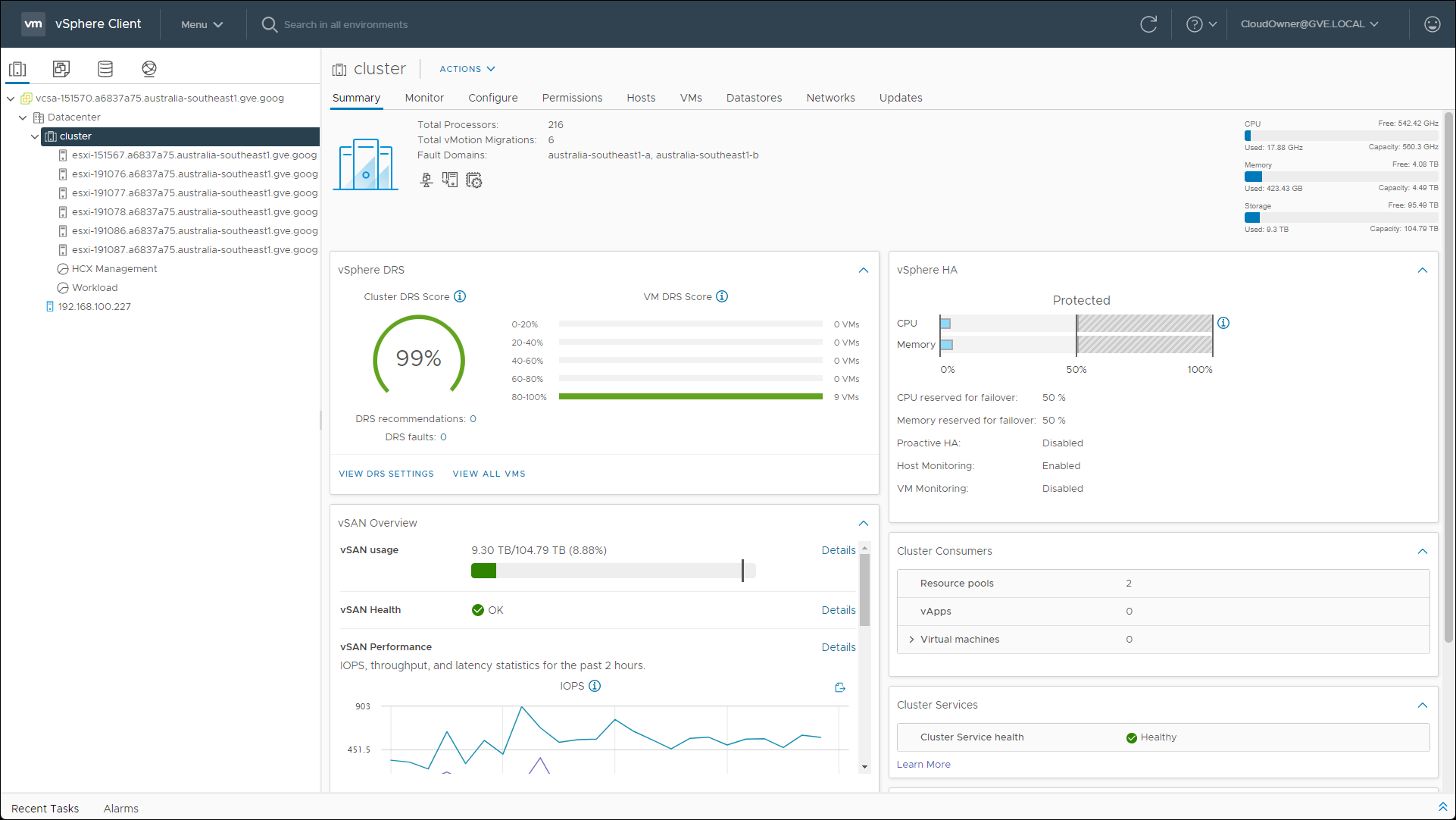Stretched Private Clouds with Google Cloud VMware Engine

Whenever an organization discusses protecting their most critical workloads, the conversation eventually turns to considering the geographic separation between datacenters. For the longer distances, traditional disaster recovery solutions such as VMware Site Recovery Manager are often required due to latency; however for the shorter distances, a stretched cluster can offer an additional layer of resiliency. This post will discuss the benefits of Google Cloud VMware Engine stretched private clouds and show how easy they are to create and manage.
Stretched Private Clouds
Simply put, creating a stretched private cloud within Google Cloud VMware Engine grants protection against zone-level failures. This is done by creating a stretched vSphere and vSAN cluster to distribute compute, storage, and witness resources between regional zones. The nodes for the cluster are distributed equally between two zones, and clusters are available in 3+3 up to 14+14 in size. In addition, the witness node is an ESXi host running in a Compute Engine instance in a third independent zone. Placing the witness in a third zone is important to prevent “site bias” so that it can continually monitor all the hosts' availability and prevent “split brain” situations. (A split-brain situation happens if a virtual machine accidentally starts running in two places at once. If this were to happen, data integrity is put at risk.)
When talking about the Google regions with multiple zones, any two zones are intended to be more than 10 kilometers apart, which means they are close enough to retain less than 5 milliseconds of round-trip latency. This low latency helps to ensure predictable levels of performance. While this 10 km separation may not guarantee protection against some larger disasters, it does protect against failures such as fiber optic cuts and other localized disruptions. Because all three zones are independent failure domains, the cluster can survive a complete failure of any single zone. That said, if any zone failures were to occur, vSphere High Availability (HA) will automatically restart the workloads on the surviving nodes in the cluster.
Deployment
Deploying a stretched private cloud is quick and easy. This is because the Google Cloud VMware Engine automated workflows take care of all the advanced configuration steps for you. You just need to provide a private cloud name, select the location, specify node count, and enter a subnet CIDR range. It is important to remember that when specifying the node count, entering 3 nodes will a create a 3+3 stretched cluster for a total of 6 nodes (plus the witness).
Demo
Here is a short demo showing the stretched private cloud creation.
 (Click to enlarge)
(Click to enlarge)
Takeaway
Creating a stretched private cloud within Google Cloud VMware Engine greatly simplifies deploying and managing a stretched vSphere and vSAN cluster, all while providing an extra layer of protection against zone-level failures.
For more information about Google Cloud VMware Engine, check out VMware Cloud Tech Zone.
